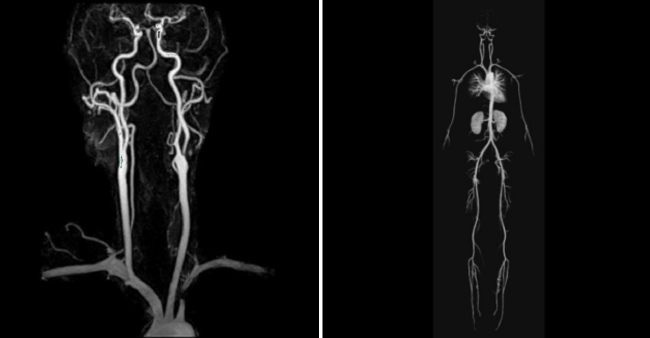 The display of blood vessels known as MR angiography is an accurate, non-invasive means of obtaining information about arteries of the head, neck and body.
The display of blood vessels known as MR angiography is an accurate, non-invasive means of obtaining information about arteries of the head, neck and body.
Using magnetic field and radio wave energy pulses, the MRA provides information that X-rays, CT scans or ultrasounds can’t always obtain. MRA exams are most often used on your neck, legs, kidneys and brain to gather information about the condition of the blood vessel walls and blood flow. They also can be used to search for aneurysms, calcium deposits and clots within the blood vessels. Sometimes, a contrast dye is used to provide better definition of the blood vessels in the scan’s images. Only the area of the body being studies will be placed inside the MRI. Exams range from 30 to 90 minutes.
An MRA scan is an extremely useful diagnostic tool that’s primary purpose is to find any problems that may exist with your blood vessels. Some of the most common uses for an MRA include:
MRA scans provide many distinct benefits both to patients and the physicians who use the images to diagnose health concerns:

Save time! To expedite your process, complete your Registration online through our Patient Portal.

Once your scan is complete, a Radiologist will examine the images. Your physician will receive the images and reports via PACS and fax. Contact your physician directly to discuss your results. Results are also available through the Patient Portal. Allow 3 to 5 business days.